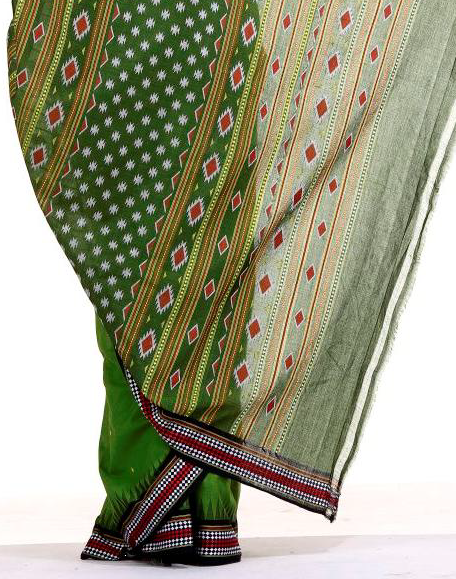Bomkai Saree
Background
The Bomkai saree has been originated from a small picturesque village called Bomkai in Ganjam district, 156 Km from Bhubaneswar in Odisha. Latter on it is introduced in Sonepur. Before 1950’s the main product mix of this area was cotton sari and dhotis. The main occupation of “Bhulia” community was weaving. Weavers had looms of short width and they used to weave cotton sari of length 13 ft and its width was 3 ft.

Material use
Cotton yarns of 10s to 40s counts were used in earlier days. However, at present, fine cotton yarns (2/80, 2/100, 2/120s), mulberry silk, tasar silk, zarietc are being used extensively.
Techniques applied
Fly shuttle pit looms as well as frame looms are used. 3 shuttle technique is used to get solid border effect, locally called as “Muhojorha saree”. Extra warp design in border and extra weft design in body and pallu are woven with the help of dobby/jacquard/jala.
How to distinguish genuine Bomkai Saree
- Traditionally, these are distinct in their use of heavily plied cotton, with stylized floral and geometrical patterns in the borders and contrast colour border and pallu (muhajorha).
- Generally, colours are very bright like red, black, dark green, dark blue, white etc.
- Designs have small dots within, which is not seen in other textiles.
- Body and pallu warp are joined to get contrast colour effect. Sometimes it combines bandha (tie dye) and supplementary
Source : Indian Handloom Brand
Last Modified : 9/4/2023
This topic provides information about Tweed.
This topic provides information about Tussar Gichh...
This topic provides information about Pochhampally...
This topic provides information about Arni Silk Sa...
